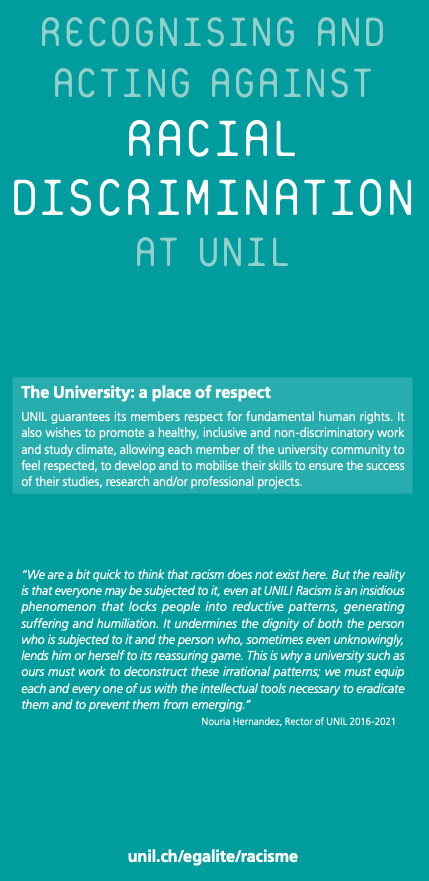Respect is a fundamental value of our university. In its charter, it guarantees its members respect for fundamental human rights. UNIL wishes to promote a healthy, inclusive and non-discriminatory working and study climate, allowing each member of the university community to feel respected, to develop and to mobilise their skills to ensure the success of their study, research and/or professional projects. Racial discrimination is not tolerated.

